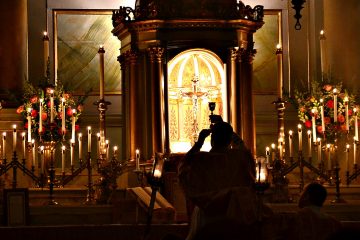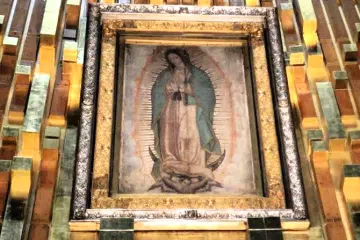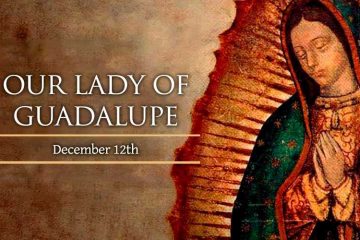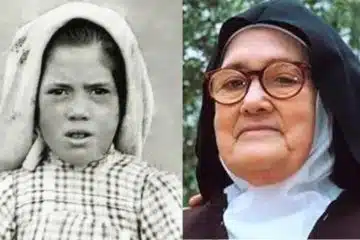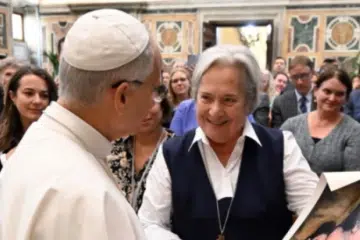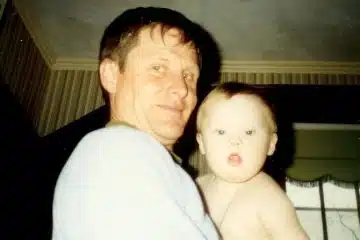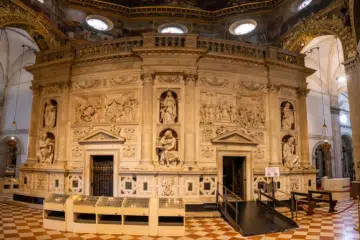Celebrating 175 years, St. Philomena bringing legacy back to life
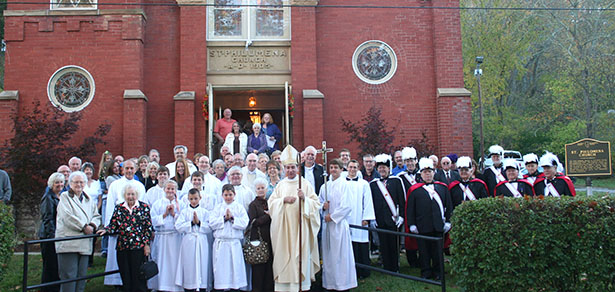
By Walt Scaefer
For The Catholic Telegraph
For the 175th anniversary of St. Philomena Parish, the oldest in Clermont County, Father Jerry Hiland wants to do more than remember its legacy. He wants to bring the legacy back to life.
And, at a time of combining parishes into pastoral regions to share a dwindling clergy, Father Hiland wants to celebrate the reality of a cluster of four parishes working together to recreate a piece of history at Clermont County’s mother church — founded as a log church in 1839.
The 100 or so member families of St. Philomena have been joined by parishioners of sister parishes: St. Louis, Owensville; St. Ann, Williamsburg, and Holy Trinity, Batavia. In all, there are about 1,000 families in the four parishes.
“This was the church in the wilderness and that’s our theme,” said Father Hiland, who has been a pastor in Clermont County for the past 15 years. “What you must do is look into and respect people’s memories. We have people who were married here, whose parents were married here and buried here – generations. They have prayed here each Sunday for 175 years.”
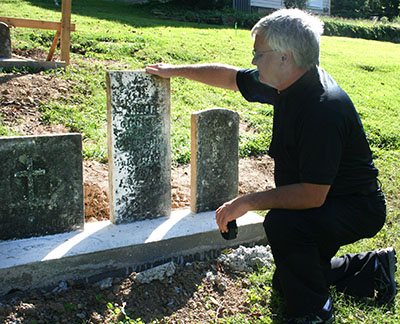
And so, recovery of history and its preservation have been the impetus behind the parish’s anniversary celebration. A recently completed archeological dig conducted by members of all four parishes has uncovered the site of the original log church. It burned to the ground on the Feast of the Ascension in 1868, was replaced by a stone church in 1869, and then by the existing red brick church in 1905.
When the original church site was discovered, one of the workers “came over and said, ‘Father, look at this charcoal.’ He handed me a handful and I could smell that fire of 1868 right there. It had been buried all of those years. I was amazed,” Father Hiland said. “We found nails from the original church, too.”
The project — dubbed “Dig St. Philomena” by long-time parishioner and parish historian Bob Burroughs — also involves restoration of the pioneer cemetery. “A few graves were found to be in the area where the original church stood,” Burroughs said.
Some of the stones were those of children who succumbed to the diseases and hardships of pioneer life. “Some of the kids I had rubbing the stones to bring out the names and dates came over to ask why the kids died and it became a powerful teaching tool not just about culture, but the hardships of the frontier…,” Father Hiland said. “The whole cemetery restoration project became a faith experience for the whole community.
“It made us start asking questions: Why do we pray to the dead. Why do we say resurrection of the dead in the creed? What is the Communion of Saints? Why is it over and over in the Scriptures and the Eucharistic prayer? We talk about the Day of the Lord, the second coming of Jesus, on and on, stuff like that. Suddenly, the Mass… the Eucharistic Prayer have meaning. We begin to realize why we pray to the saints and angels. Those people out in the graveyard are here with us and they are part of this church. We realize the obvious — we bury the dead because Jesus was buried.
“We’re going to reconstruct the walkway, using the original field stones, along the side the restored Pioneer Cemetery.”
Father Hiland said another valuable teaching moment came when workers became amazed at the work it took to build the old churches and maintain them. “How did they get the logs? They cut them by hand. Why did they do it?
The culmination of the project started in the anniversary year may be a year or two off. The public history graduate program at Northern Kentucky University has been asked to get involved. An anonymous donor has given the parish an 1830s two-story, log cabin; another has given Father Hiland a period iron bell. “The log cabin is on a nearby farm in Clermont County and is supposedly connected to a prominent county pioneer family. Supposedly it was once a general store.”
A farmer and parishioner has donated the heavy equipment necessary to move the log cabin from its present day site to a large building on the grounds of St. Louis Church, Owensville for fabrication and restoration work. The cabin will be turned into an 1830 log church and placed on the east side of St. Philomena, not on the original site to the west of the church because of the graves there.
“People on Sunday drives come here. People come up to this little country church by the stream and look around. It’s my dream to have (a period building of the) original log church here and have members of our four parishes taking turns showing the visitors around. We’ll have a restored cemetery, the log church, the present day 1905 church and we’ll create an ideal place for education, prayer, meditation, retreats and visitors will see a living faith community and realize this isn’t some nothing place.
“It will become an opportunity to evangelize… in county where less than three percent of the people are Catholic. We want people who have problems to pray; we want people with hopes and dreams. Maybe they’ll want to light a candle; maybe just look around,” Father Hiland said.
“It’s kind of nice to be a little country parish because we don’t have tons of people coming through. But, on the other hand, this was a very important place in the archdiocese and people have forgotten about it. If we don’t do something now, it isn’t going to happen. It’s harder and harder to find 1830 log cabins,” he said.
So, Father Hiland and members of the four parishes want to create “a place to rediscover faith and we want to share it. Either we try to hide it and then the future is in deep trouble, or we show everyone what it really is. It’s a treasure of our faith; and we have thrown away too many treasures.”
This story originally appeared in the January 2015 print edition of The Catholic Telegraph.



